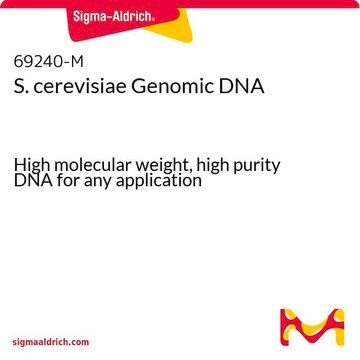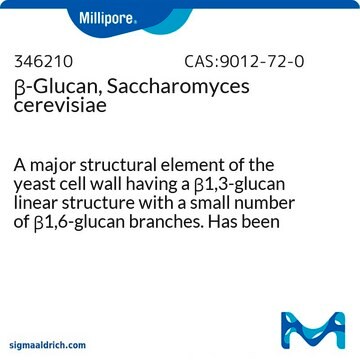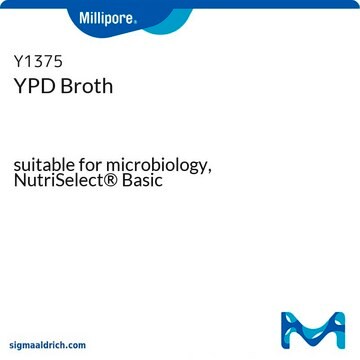This product is specifically prepared to undergo autolysis in aqueous buffer solution at 37°C, optimized for retaining enzyme activity post-drying, though not for cell viability or growth. It serves as an excellent starting point for enzyme extraction processes. For proliferation, Product YSC2 is a viable baker’s yeast, ready to grow once rehydrated, with only about 10% subject to autolysis at the same temperature. It is the preferred option for those looking to cultivate yeast effectively.
YSC1
Yeast from Saccharomyces cerevisiae
Type I
Synonym(e):
(Bakers yeast)
Größe auswählen
CHF 251.00
Größe auswählen
About This Item
CHF 251.00
Empfohlene Produkte
Biologische Quelle
Saccharomyces cerevisiae
Typ
Type I
Form
powder or solid
Anwendung(en)
food and beverages
microbiology
Lagertemp.
2-8°C
Allgemeine Beschreibung
Anwendung
Biochem./physiol. Wirkung
Vorsicht
Angaben zur Herstellung
Lagerklassenschlüssel
11 - Combustible Solids
WGK
WGK 3
Flammpunkt (°F)
Not applicable
Flammpunkt (°C)
Not applicable
Persönliche Schutzausrüstung
Eyeshields, Gloves, type N95 (US)
Hier finden Sie alle aktuellen Versionen:
Analysenzertifikate (COA)
Die passende Version wird nicht angezeigt?
Wenn Sie eine bestimmte Version benötigen, können Sie anhand der Lot- oder Chargennummer nach einem spezifischen Zertifikat suchen.
Besitzen Sie dieses Produkt bereits?
In der Dokumentenbibliothek finden Sie die Dokumentation zu den Produkten, die Sie kürzlich erworben haben.
Kunden haben sich ebenfalls angesehen
Protokolle
This procedure may be used for the determination of Lyticase activity using Baker’s yeast as the substrate.
-
Hi We would like to expand this yeast in our lab for an experiment. Would you please recommend best growth media for expanding this Yeast.
1 answer-
Helpful?
-
-
What are the differences between YSC1 and YSC2?
1 answer-
YSC1 is dried to prevent enzyme inactivation during enzyme extractions from yeast. On the other hand, YSC2 is fast dried and yields 90% viable cells in solid form. The primary difference lies in the method of preparation, particularly in the drying process.
Helpful?
-
Active Filters
Unser Team von Wissenschaftlern verfügt über Erfahrung in allen Forschungsbereichen einschließlich Life Science, Materialwissenschaften, chemischer Synthese, Chromatographie, Analytik und vielen mehr..
Setzen Sie sich mit dem technischen Dienst in Verbindung.













